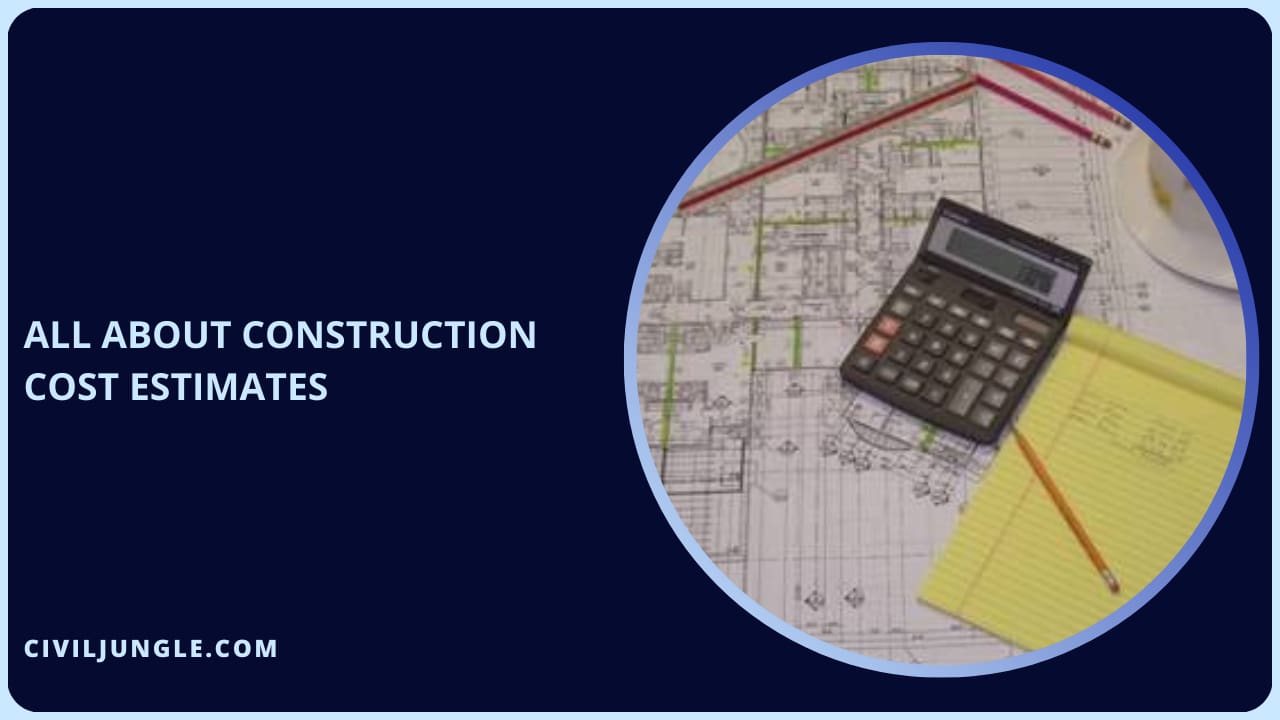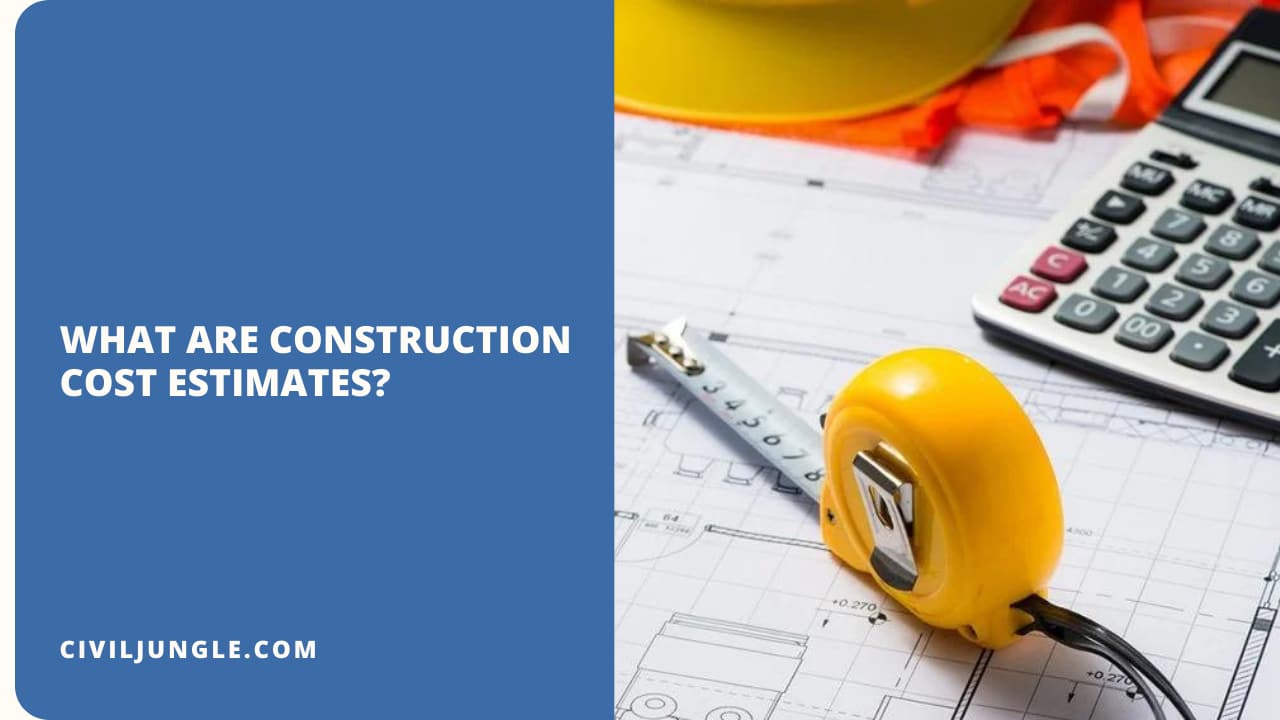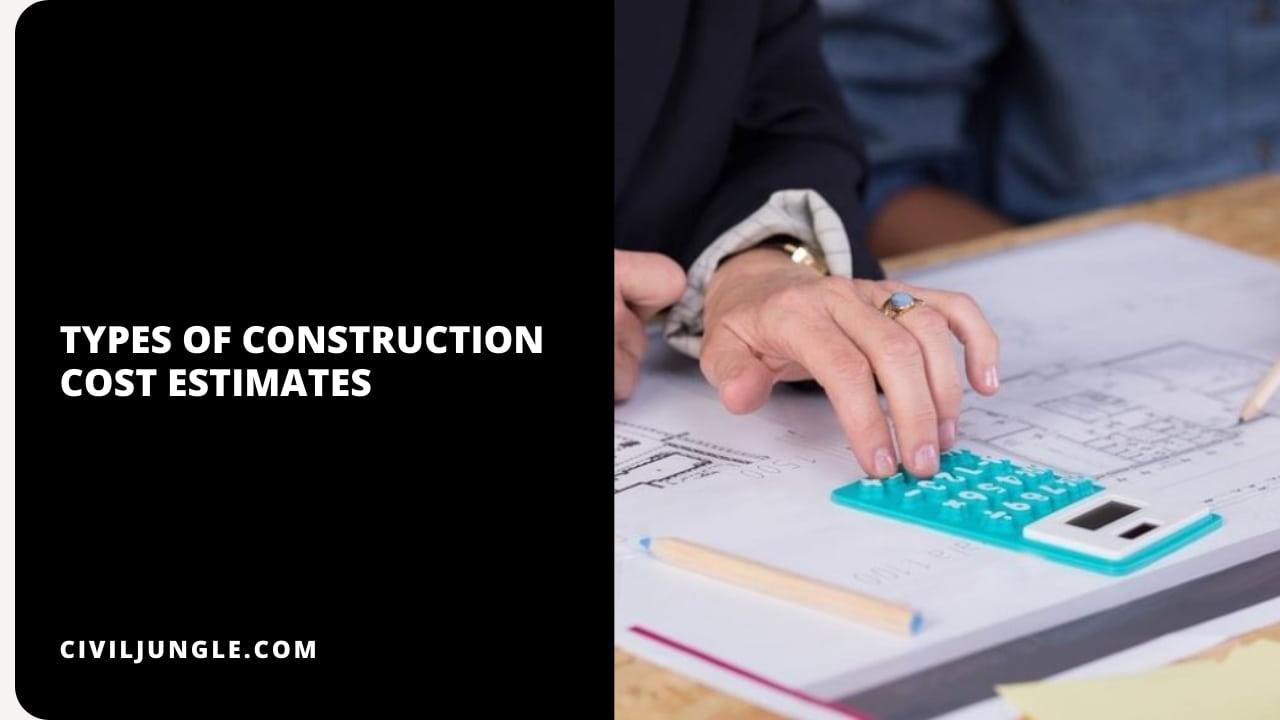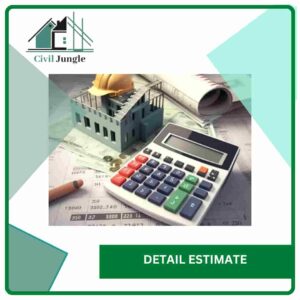What Are Construction Cost Estimates?
Important Point
The construction cost estimate is defined as the predicted cost required to complete the construction of any particular project, which is prepared before the construction works are taken up. Essentially, it answers the question, what is a construction cost estimate?
It is essential to prepare the detailed construction cost estimate for every work to know the exact cost and the quantity of materials required to complete the project.
Cost Estimate is a method of calculating the quantities for the different items required in the construction and the probably expected cost needed for the completion of the project.
Purpose of Preparing a Cost Estimate
- To sanction the amount of money required for the completion of the construction project.
- To have a rough idea about the quantities of materials needed for the work.
- To understand the number of skilled as well as unskilled laborers required for the completion of the work.
- To arrange the funds required for the project and invite tenders for the project.
- To understand the time needed for the completion of the project.
Useful Article for You
- What Are Tiles
- What Are Spread Footings
- What Are Contour Intervals
- What Are Parapets
- What Are Walls Made Of
- What Are Cinder Blocks Used For
- What Are Grade Beams
- What Are Cranes
- What Are Piers
- What Are Concept Sketches
- What Are Micropiles
- What Are Cmu Walls
- What Are Residential Buildings
- What Are Flights of Stairs
- What Are Well Points
- What Are Weep Holes
- What Are Oblique Drawings
- What Are Doors
- What Are Flagstones
- What Are Caissons
- Construction Cost in India
- What Is the Purpose of Foundation
Types of Construction Cost Estimates
There are different types of cost estimates in construction that are generally used in the Construction industry. These can range from detailed estimate construction to more general approximations.
- Plinth Area Method
- Cubical Content Method
- Service Bay Method
- Typical Bay Method
- Approximate Quantity Method
2. Detail Estimate
- Revised Estimate
- Supplementary Estimate
- Revised and Supplementary Estimate
- Repair and Maintenance Estimate
1. Approximate Estimate
The Approximate estimate is also known as the preliminary estimate. It is helpful in getting administrative approval. For the preparation of the approximate estimate, the site plan or the layout plan is required. The approximate estimate will help to check the feasibility of the project.
In government projects, the approximate estimate is required for the budget provision and the administrative approval. It is also helpful if the valuation of the existing buildings is not done.
1.1. Plinth Area Method
The cost estimate by the Plinth area method is prepared on the basis of the plinth area of the structure, which is covered by the external dimensions of the building at the floor level and plinth area rate of the structure that is the cost of the similar Building with the specifications in that locality.
The cost of construction of the project is determined by multiplying the plinth area with the plinth area rate. The area is obtained by multiplying the length and breadth of the structure. The dimensions should be measured from the outer to outer dimensions of the Building.
While fixing the plinth area rate, care should be taken that the essential enquires should be made with the quality and quantity of the fixtures and the number of storeys of the Building.
Plinth area of the Building = ( Cost of construction of the existing building/ Plinth area of Building)
For example, if we require a plinth area estimate to be calculate having 100 sq.m in a particular locality and the plinth area rate of a building in the same locality is Rs 2500 per sq.m, then the plinth area estimate is 100 X 2500 = Rs 250000.
Also, Read: Bolt Vs Screw | What Is Bolt | What Is Screws
1.2. Cubical Content Method
The cubical content is a method used for the calculation of the approximate estimate. In this method, the volume of the Building is considered.
The Cubical content method of the approximate estimate is more accurate as compared to the plinth area method. For the calculation of the volume of the Building, the length, breadth, and height of the building is considered.
This can also be calculated by multiplying the plinth area of the Building with the height of the Building. The Height of the Building should be considered from the floor level up to the top of the floor level of the Building.
In this method, the foundation of the Building, parapet wall above the roof of the wall is not considered in the calculation. The rate per cubic meter is taken into consideration based on the costs of similar types of buildings situated in that location.
1.3. Service Bay method
Every structure which is constructed has some purpose for which its construction is done. For example, the construction of the hospital is designed and constructed the accommodate a certain number of beds for the patients.
So in the case of the construction and design of the hospital, the bed is considered as the service unit of the hospital building. Whenever any structure is designed as constructed, the approximate cost estimate of the construction can be calculated on the basis of the per-service unit.
Following are some of the types of buildings and their service units which are considered while calculating an approximate estimates of the building.
| Sr. No. | Type of building | Service unit of the Building |
| 1 | Hospital | Per bed |
| 2 | Theatre | Per seat |
| 3 | School | Per class room |
| 4 | Stadium | Per seat |
| 5 | Hostel | Per bed |
| 6 | Water Tank | Per liter |
| 7 | Bridge | Per meter of span of bridge |
The Approximate cost estimate can be calculated by the following formula
Approximate cost estimate by the service bay method = Number of the service units x Cost per service unit.
Also, Read: What Is Bridge Abutment | 5 Types of Abutments
Useful Article for You
- Classification of Stone Work
- Stone Masonry vs Brick Masonry
- Cement Rate Today
- How to Get House for Free
- Top 10 Cement in India 2023
- Slab Reinforcement Calculation
- Steps for Construction of Building
- What Is Hempcrete
- How Long Does Thinset Take to Dry
- Floating Concrete Slab
- Zero Force Members
- How Much Does a Yard of Concrete Weigh
- Gradient Road
- Types of Vaulted Ceilings
- Pile-Cap
- Bond Breaker
- Budget Sunroom Ideas
- What Is Gypsum Board
- What Are Risers
- What Are Engineering Drawings
1.4. Typical bay method
The Typical bay method of the approximate cost estimate is suitable when the structure has a number of bays. Bay is basically a center to center distance between two supports. When the area of the Building consists of parts with similar shapes and sizes, such as godowns, factory sheds, then this method is suitable for calculating the approximate cost estimate.
The cost per bay is calculated, and then it is multiplied by the number of bays present in that Building.
Approximate cost estimate by the Typical Bay method = Number of Bays x cost of per bay
1.5. Approximate quantity method
In the method of the Approximate quantity method, the structure is divided into mainly two parts.
- Foundation of the structure, including plinth
- Superstructure
In this method, the total running meter length of the structure is calculated, and then it is multiplied by the rate per running meter. The rate per running meter is calculated separately for the foundation and superstructure.
2. Detail Estimate
The Detailed estimate includes the detailed particulars for the quantities, rates, and costs of all the items required in the completion of a construction project.
The Detailed estimate is the best and the most accurate estimate which is prepared for various types of works.
2.1. Revised Estimate
The Revised estimate is a type of the detailed estimate for the revised quantities and rates of the item works originally provided in the estimate prepared and submitted for the fresh technical sanction.
The revised estimate is prepared for the following reasons. When the sanctioned estimate is likely to exceed by more than 5% either from the rates that are found insufficient or from any cause whatsoever except the important structural alterations.
When the expenditure of the construction work exceeds more than 10% of the administrative approval. When the material deviations from the original proposal but not due to the material deviation of a structural nature. When the sanctioned estimate is more than the actual requirement.
2.2. Supplementary Estimate
The supplementary cost estimate is a type of detailed estimate which is prepared at the time of the actual execution, there are some changes or additional work has to be done for the project.
These changes may be due to various reasons like material deviation or the difference in the structural design. For the supplementary cost estimate, a separate abstract sheet is prepared. The supplementary cost estimate is prepared for covering the estimate of the sub-work of a project.
2.3. Revised and Supplementary Estimate
During the execution of the construction work, the site conditions condition cannot be forecasted. There are many factors that can affect the execution of the construction work.
When the work of the construction project is going on, it is found that there is some increase in the volume of the construction work due to any reasons due to site conditions.
In such conditions, the revised and supplementary estimate is prepared, and the amount of the supplementary estimate is added in the revised estimate showing the amount separately.
2.4. Repair and Maintenance Estimate
After the completion of any construction project, it is essential that the structure should be maintained in a good and safe condition. For which periodical maintenance of the structure is required.
This type of estimate is known as the Repair and maintenance estimate. In the case of the roads and highways, the annual maintenance cost estimate is prepared to repair the patches, bridges, and culverts.
In case of the repair and maintenance estimate for the Building, whitewashing, painting of the doors and windows is prepared. For the annual and repair maintenance cost estimate, about 1% to 1.5% of the original construction cost of the project is provided.
Construction Cost Estimates
Construction cost estimating is the process of forecasting the cost of building a physical structure. Project owners use cost estimates to determine a project’s scope and feasibility and to allocate budgets. Contractors use them when deciding whether to bid on a project.
Construction Estimating
Construction estimating is the process of anticipating the expense of building a physical structure. Estimators need to be as accurate as possible because profit margins (the livelihood of contractors) are impacted if any estimated direct and indirect costs for the project are off by even the slight amount.
How Do I Estimate Building Costs?
Arriving at an exact figure for new home costs per square foot might not be realistic, but getting a ballpark idea should be possible. To do this, take the total cost of your project, as outlined by your builder, and divide this by the total number of square feet in your project.
Also, Read: Building Estimation Step by Step In Excel Sheet
Building Cost Estimator
Construction cost estimating is the process of forecasting the cost of building a physical structure. Project owners use cost estimates to determine a project’s scope and feasibility and to allocate budgets. Contractors use them when deciding whether to bid on a project.
Types of Construction Estimates
1. Approximate Estimate
- Plinth Area Method
- Cubical Content Method
- Service Bay Method
- Typical Bay Method
- Approximate Quantity Method
2. Detail Estimate
- Revised Estimate
- Supplementary Estimate
- Revised and Supplementary Estimate
- Repair and Maintenance Estimate
What Are the Three Types of Cost Estimates?
Cost estimates can be classified into three types according to their intended purpose. The three types of cost estimates are design, bid, and control estimates.
Like this post? Share it with your friends!
Suggested Read –
- Mat Foundation Vs Spread Footing
- What Is Shoring In Construction | Type of Shoring
- Concrete Vs Cement | What Is Cement | What Is Concrete
- 10 Mortar Vs Concrete | What Is Mortar & Concrete | Types of Mortar & Concrete
- Load Bearing Wall Construction | How to Tell If a Wall Is Load Bearing | Load Bearing Beam | Non-Load Bearing Wall | Non-Load Bearing Wall Framing
- What Is Shotcrete | Shotcrete & Concrete | Shotcrete Technology | Types of Shotcrete Technology | Advantages of Shotcrete | Disadvantages of Shotcrete
- Definition of Shear Force and Bending Moment | What Is Shear Force | What Is Bending Moment | Relation Between Loading, Shear Force & Bending Moment
Originally posted 2023-09-13 12:12:21.







Leave a Reply